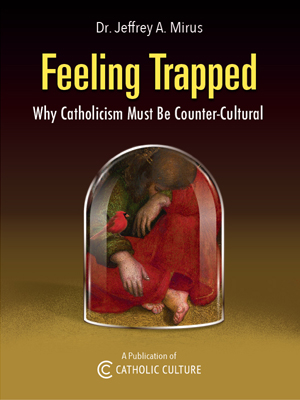Place Of Popular Devotion
The Catholic Church has recently come through an extremely difficult phase with regard to popular devotion, a phase that some have called "iconoclastic".
From 1963-73, Focus On Liturgy Eliminates Popular Piety
During the years from 1963 to 1973, a movement grew up that tended to ostracize everything that came under the heading of popular devotion, piety, popular religiosity . . . Liturgical renewal, the publication of new liturgical books, the effort to prepare the Christian people — clergy and faithful — to absorb and pursue more deeply the urgings of the Council, were all factors that seemed to push the so-called "devotional practices" to the margins.
This was one of the most evident contradictions of an era that exalted the Church as the People of God, opening the liturgy to the national languages and promoting the direct participation of the people, and at the same time pushed aside the forms of popular piety.
What were the consequences? "The devotions that sustained and gave warmth to Christian life, with its daily, weekly, and seasonal rhythm, did not find a surrogate or alternative in liturgical life" (John Paul II to the Bishops of Puglia and Basilicata, 28 November 1981). And this void was filled for many by degenerate forms of religiosity and by a move toward the sects.
1976 CELAM Meeting And "Evangelii Nuntiandi"
The first signs of a change in favour of popular devotions were seen, not coincidentally, in Latin America, starting with the important meeting organized by the CELAM in Bogota in 1976, on "The Church and Popular Religiosity in Latin America".
A fundamental milestone on this path of change was the Apostolic Exhortation Evangelii nuntiandi, in which Paul VI urged a change of attitude on the part of pastors, inviting them to acknowledge the undeniable values of the forms of popular religiosity and to help them to overcome the risks of deviation. This opened a way that became even clearer during the Pontificate of John Paul II, who stated that, "popular piety is not a vague feeling, lacking any solid base in doctrine. Often, on the contrary, it is a true expression of a soul of a people touched by grace and shaped by the happy encounter between the work of evangelization and the local culture. This is the way in which the poor, the beloved of the Lord, live and express in all the dimensions of their life the Mystery of the faith that has been communicated to them" (Address at Zapopan, Mexico, 30 January 1979).
Popular Piety Helps Us To Remember Christ Is With Us In Daily Life
We must avoid the simplification that considers "popular piety" as opposed to a liturgy that is not "popular". If it is true that some forms of clericalization of the liturgy have at times kept it from an authentic participation on the part of the people, it is also true that the real nature of the liturgy is to be the expression of the pietas populi Dei. Pilgrimages, processions, novenas, tridui of preparation for feasts are valid devotional practices for living the reality of the liturgy more deeply. Thus prayers like the daily Angelus, morning and evening family prayer, table blessing, the Rosary, aspirations, visits to sanctuaries, and so on, help to keep the memory of the presence of Christ alive in daily life and to give public witness of it, combating the capillary work of "distraction" exercised constantly by the dominant culture. Popular piety has helped to form — in the life of persons, families, and nations — a tradition of the people, an iconography, a Christian wisdom in the face of the fundamental question of existence.
The West Can Learn From The East How To Keep Balance Between Liturgy And Popular Piety
Again, the practice of many forms of popular devotion concretely helps us to rediscover fundamental aspects of the Christian mystery which are not easily lived in liturgical celebrations.
The history of the liturgy of the Church teaches us how many insights, forms and actions of popular piety — pagan, Hebrew, and Christian — have come into it. From this point of view, it is useful to compare, in a fruitful spirit of ecumenism, the Western and Eastern liturgical tradition, since the latter is traditionally much more open to the incorporation of elements of popular piety.
27 September 2001
Cardinal Norberto Rivera, Member of the Congregation for Divine Worship and the Discipline of the Sacraments
© L'Osservatore Romano, Editorial and Management Offices, Via del Pellegrino, 00120, Vatican City, Europe, Telephone 39/6/698.99.390.
This item 4616 digitally provided courtesy of CatholicCulture.org






